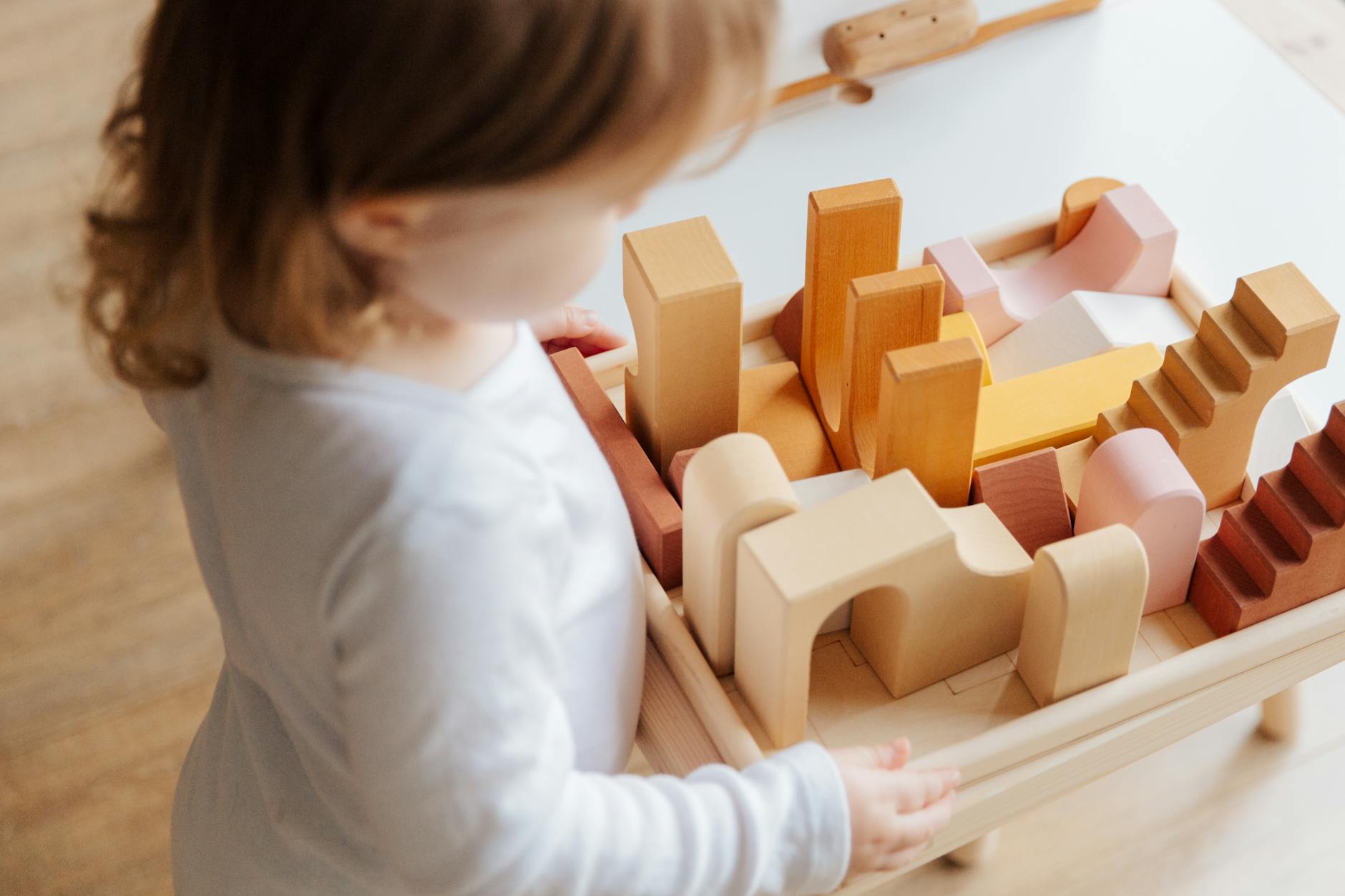Sensory Activities for Autism
Engaging in sensory activities can bring numerous benefits to children with autism. These activities are designed to provide a safe and structured environment for them to explore and interact with different sensory stimuli, improving sensory processing skills and overall well-being. Sensory activities for autism aim to create a sensory-rich environment that encourages exploration, learning, and self-regulation.
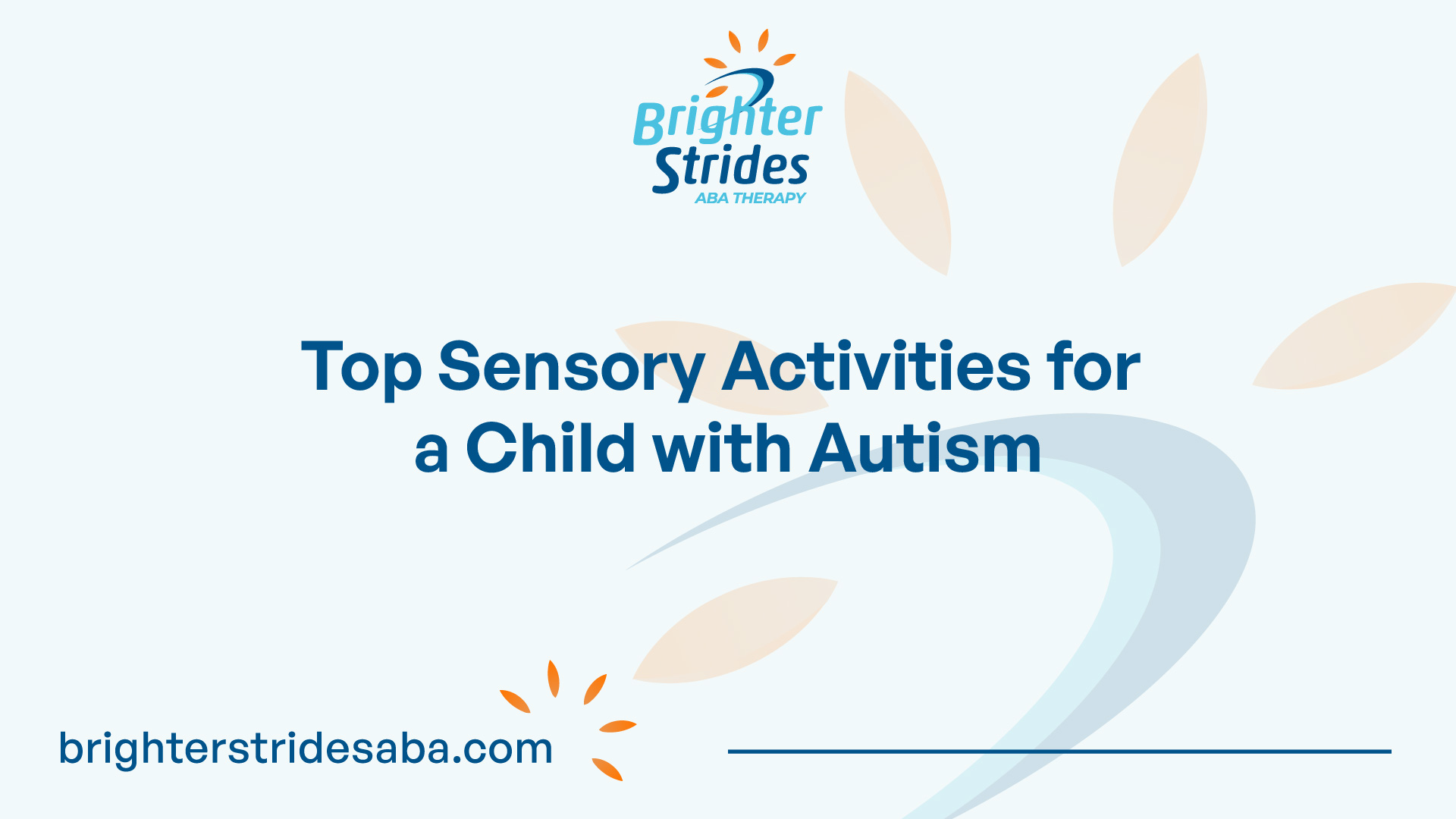
Benefits of Sensory Activities
Sensory activities play a crucial role in supporting the development and well-being of children with autism. These activities provide a supportive and enriching environment for individuals with autism to thrive. By engaging in sensory activities, children with autism can experience the following benefits:
- Improved sensory processing skills: Sensory activities help children with autism regulate their responses to sensory input. Through exposure to a range of sensory stimuli, they can develop strategies to better process and integrate sensory information, reducing sensitivities and enhancing their ability to navigate the sensory world.
- Enhanced language and social skills: Sensory activities provide children with autism opportunities to learn and practice language and social skills in a natural and engaging manner. These activities help them understand and communicate their emotions, wants, and needs effectively, fostering improved communication and social interactions.
- Development of fine and gross motor skills: Sensory activities help fine-tune motor skills in children with autism. By engaging in various sensory experiences, they develop and strengthen both large and small muscle groups, improving coordination and dexterity. This can have a positive impact on daily tasks and activities that require motor skills, such as tying shoes.
Importance of Sensory Integration
Children with autism typically struggle to process sensory information, which can be overwhelming and cause extreme sensitivity. Sensory activities play a crucial role in sensory integration, which is the ability to organize and make sense of sensory input from the environment. By engaging in sensory activities, children with autism gradually develop their sensory integration abilities and become more adept at filtering, interpreting, and responding to sensory stimuli in a more adaptive and regulated manner.
Sensory activities for autism encompass a wide range of experiences that engage and stimulate the senses. These activities are designed to provide a supportive and enriching environment for individuals with autism to thrive, promoting sensory processing skills and overall well-being. By incorporating sensory activities into daily routines, parents, educators, and therapists can help children with autism develop essential skills and navigate their sensory world more effectively.
Types of Sensory Activities
Sensory activities for children with autism encompass a wide range of experiences that engage and stimulate the senses. These activities are designed to provide a supportive and enriching environment for individuals with autism to thrive, as cited by Yellow Bus ABA.
Visual Stimuli Activities
Visual stimuli activities focus on engaging and stimulating the sense of sight. These activities can help children with autism develop visual processing skills, promote eye-tracking abilities, and enhance visual perception. Some examples of visual stimuli activities include:
- Bubble play: Blowing bubbles and observing their colors and movements.
- Light shows: Using light projectors or lava lamps to create visually stimulating effects.
- Visual arts: Engaging in activities like drawing, painting, or collaging to encourage creativity and visual expression.
- Sensory bottles: Creating bottles filled with colorful objects or glitter to provide visual stimulation and promote focus.
Auditory Sensory Activities
Auditory sensory activities aim to engage and stimulate the sense of hearing. These activities provide opportunities for children with autism to explore and process various sounds, develop auditory discrimination skills, and promote auditory processing. Examples of auditory sensory activities include:
- Music therapy: Listening to different genres of music or playing musical instruments.
- Sound scavenger hunt: Identifying and locating specific sounds in the environment.
- Nature sounds: Listening to recordings of natural sounds, such as rain, waves, or bird songs.
- Musical chairs: Engaging in a game of musical chairs to stimulate auditory and motor skills.
Tactile Sensory Activities
Tactile sensory activities focus on engaging and stimulating the sense of touch. These activities provide opportunities for children with autism to explore different textures, develop tactile discrimination skills, and promote sensory integration. Some examples of tactile sensory activities include:
- Sensory bins: Providing containers filled with materials like rice, sand, or water for tactile exploration.
- Playdough or clay play: Manipulating and molding these materials to enhance tactile perception and fine motor skills.
- Sensory touch boards: Creating boards with various textures for children to touch and explore.
- Finger painting: Using fingers to create artwork with different textures and sensations.
Vestibular Sensory Activities
Vestibular sensory activities focus on engaging and stimulating the sense of balance and movement. These activities provide opportunities for children with autism to develop their vestibular system, improve coordination, and regulate their sensory responses. Examples of vestibular sensory activities include:
- Swinging: Engaging in swinging activities on swings or hammocks.
- Balance beams: Walking or balancing on narrow beams or lines.
- Obstacle courses: Navigating through a series of physical challenges that involve climbing, crawling, and jumping.
- Yoga: Practicing yoga poses and movements that promote balance and body awareness.
By engaging in a variety of sensory activities across the different senses, children with autism can enhance their sensory processing skills, promote self-regulation, and create a more enriching and enjoyable sensory experience.
Multi-Sensory Activities
Engaging Multiple Senses Simultaneously
Multi-sensory activities play a vital role in providing a holistic sensory experience for children with autism. These activities engage different senses simultaneously, enhancing sensory integration and promoting overall development [1]. By incorporating multiple sensory stimuli, these activities can help children with autism process and respond to sensory information more effectively.
Engaging multiple senses simultaneously can be achieved through a variety of activities. Here are some examples:
- Sensory Art: Encourage children to express themselves through art while engaging their senses. Activities such as finger painting, creating textured collages, or using scented markers can stimulate both the visual and tactile senses. This allows children to explore different colors, textures, and smells while developing their fine motor skills.
- Sensory Play: Create sensory bins or tables filled with materials that provide tactile and visual stimulation. Incorporate items like rice, sand, water beads, or dry pasta. Children can explore these materials by touching, pouring, or scooping, enhancing their sensory experience and promoting sensory integration.
- Music and Movement: Engage children with autism in activities that involve music and movement. Dancing, playing musical instruments, or participating in rhythmic games can stimulate the auditory and vestibular senses. These activities not only provide sensory input but also promote coordination, motor planning, and self-expression.
- Outdoor Exploration: Take advantage of the natural environment to engage multiple senses. Outdoor activities such as nature walks, gardening, or playing in a sensory garden allow children to experience different sights, sounds, smells, and textures. This helps to develop their sensory processing skills and foster a connection with the world around them.
- Cooking and Baking: Involve children in the kitchen to stimulate their senses of touch, taste, and smell. Activities like measuring ingredients, mixing, and kneading dough provide a hands-on experience while promoting fine motor skills and sensory exploration. Additionally, children can enjoy the sensory satisfaction of tasting the delicious creations they helped prepare.
By engaging multiple senses simultaneously, children with autism can experience a rich and varied sensory environment. These multi-sensory activities provide opportunities for sensory exploration, integration, and learning. It is important to tailor the activities to each child’s individual needs and preferences, ensuring a positive and enjoyable sensory experience. Remember to provide a structured and supportive environment to help children with autism thrive and grow.
Sensory Activities at Home
When it comes to engaging children with autism in sensory activities, there are numerous options that can be implemented at home. These activities provide a safe and structured environment for children to explore and interact with different sensory stimuli, supporting their development and well-being. Let’s explore two categories of sensory activities that can be easily done at home: easy DIY sensory activities and creating a sensory play space.
Easy DIY Sensory Activities
Implementing sensory activities at home doesn’t have to be complicated. With a few common items, you can create engaging experiences for children with autism. Here are some easy DIY sensory activities that you can try:
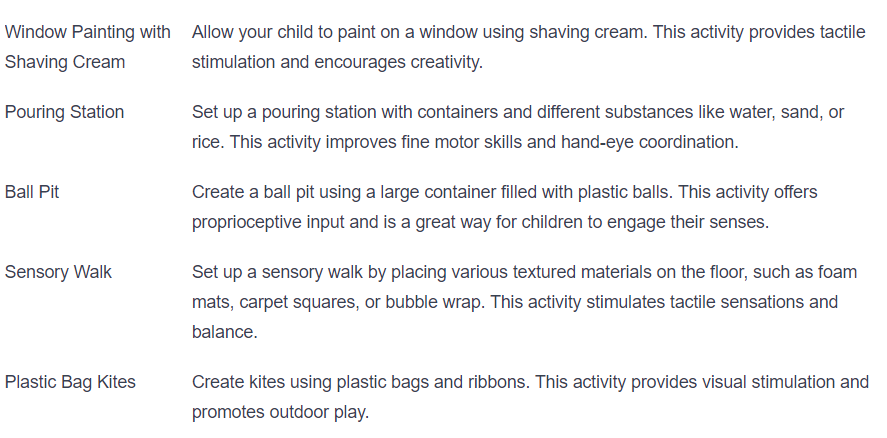
These sensory activities help children with autism develop fine motor skills, hand-eye coordination, balance, and encourage creativity. They can be easily adapted based on your child’s preferences and abilities.
Creating a Sensory Play Space
Designating a specific area in your home as a sensory play space can provide a dedicated environment for sensory exploration. You can transform a corner of a room or a small area into a sensory haven. Here are some ideas to create a sensory play space:
- Use items from the kitchen, playroom, and backyard to create different sensory zones. For example, you can set up a cozy reading nook with soft pillows and blankets, a sensory table with various textures, or a calming area with dim lights and comfortable seating.
- Incorporate sensory materials such as sensory bins filled with rice, beans, or water beads, textured wall panels, or hanging mobiles with visually stimulating objects.
- Include a variety of sensory experiences, such as visual, auditory, tactile, and vestibular activities, to engage multiple senses simultaneously.
- Organize materials and toys in a way that is easily accessible for your child, allowing them to independently explore and engage in sensory play.
By creating a dedicated sensory play space, you provide a structured and supportive environment for your child to engage in sensory activities and promote their development.
Remember, every child with autism is unique, and activities should be tailored to their individual needs and preferences. Encourage your child to participate in these sensory activities at their own pace, providing support and guidance as needed. With these easy DIY activities and a dedicated sensory play space, you can create a sensory haven for your child at home.
Emotional Regulation Strategies
When it comes to supporting children with autism in managing their emotions, it is essential to employ effective strategies that promote emotional regulation. Two valuable techniques that can be beneficial for children with autism are deep breathing exercises and the use of zones of regulation.
Deep Breathing Exercises
Deep breathing exercises can be incredibly helpful for children on the autism spectrum when they are feeling overwhelmed or struggling to regulate their emotions. These exercises involve breathing in deeply through the nose and exhaling slowly through the mouth. This technique is widely taught to help individuals, both neurotypical and neurodiverse, calm themselves when faced with emotional challenges.
Encouraging children to practice deep breathing can provide them with a simple and effective tool to manage their emotions. By focusing on their breath, they can redirect their attention and calm their minds. Parents and caregivers can guide children through deep breathing exercises, modeling the technique and providing reassurance and support.
Zones of Regulation
Establishing zones of regulation can be a valuable framework for children with autism to recognize and understand their emotional states. This technique involves using a color-coded system, an emotional levels chart, or a numerical system to help children identify and communicate their current emotional state.
By categorizing emotions into different zones, such as green for calm, blue for sad, yellow for anxious, and red for angry, children can develop a better understanding of their feelings. This empowers them to identify when they are in a particular zone and prompts them to take appropriate actions to regulate their emotions. Creating visual aids or charts that represent the different zones can be especially helpful for children with autism to grasp this concept.
Modeling appropriate behavior is crucial when teaching emotional regulation strategies to children with autism. Parents and caregivers should demonstrate how to handle emotions calmly and effectively, serving as a positive example for children to follow. This can involve discussing personal experiences, using social stories, and reinforcing positive coping mechanisms.
In addition to deep breathing exercises and the use of zones of regulation, engaging in calming activities and providing sensory support can also aid in emotional regulation for children with autism. These activities can include using fidget spinners, engaging the five senses, or creating a calm sensory space. By offering appropriate tools and outlets for sensory needs, children can find comfort and regain emotional balance.
It’s important to remember that sensory overload can often lead to emotional struggles for children on the autism spectrum. By recognizing and addressing these triggers, parents and caregivers can provide the necessary support and help children navigate their emotions more effectively [6].
Sensory Regulation Techniques
Children with autism often benefit from sensory regulation techniques that help them manage their arousal levels and promote emotional well-being. These techniques can be classified into two categories: increasing arousal levels and decreasing arousal levels. By understanding and implementing these strategies, parents, caregivers, and educators can effectively support children with autism in their sensory experiences.
Increasing Arousal Levels
To increase arousal levels in children with autism, various strategies can be employed. These strategies aim to provide sensory input that stimulates and energizes the child. Some examples of techniques to increase arousal levels include:
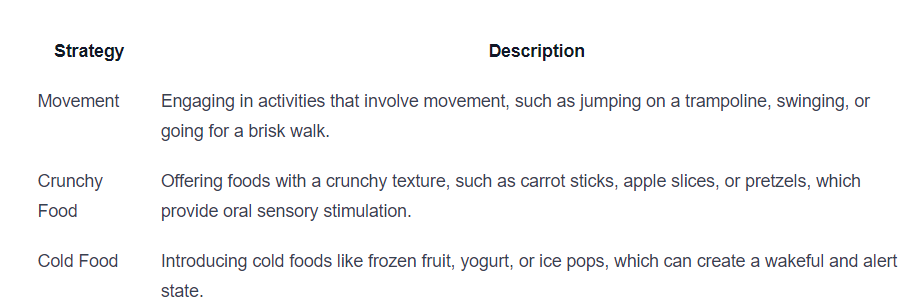
These strategies help children with autism become more alert and engaged, enabling them to better focus and participate in their daily activities. Implementing these techniques based on the individual needs of the child can have a positive impact on their sensory regulation.
Decreasing Arousal Levels
On the other hand, decreasing arousal levels is essential for children with autism when they become overstimulated or overwhelmed. It is crucial to provide calming sensory experiences to help them relax and self-regulate. Some strategies to decrease arousal levels include:
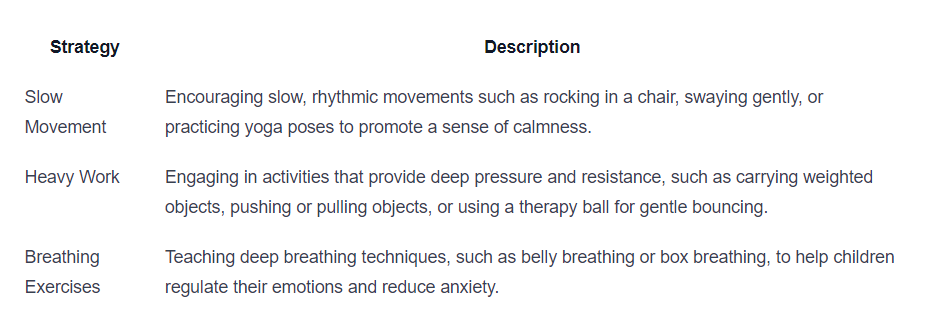
By implementing these techniques, children with autism can better manage sensory overload and restore a state of calmness. It is important to create a supportive environment that allows them to engage in these sensory regulation techniques when needed.
Remember, each child with autism is unique, and their sensory needs may vary. It is crucial to tailor these strategies to the individualized education plan and specific needs of the child. Consistency, patience, and observation are key when supporting children with autism in their sensory regulation journey.
References
- https://www.abtaba.com/blog/sensory-activities-for-autism
- https://www.yellowbusaba.com/post/sensory-activities-for-a-child-with-autism/
- https://www.eccm.org/blog/benefits-of-sensory-activities-for-children-with-autism
- https://www.hopebridge.com/blog/10-easy-sensory-activities/
- https://bridgingthegap.com.sg/benefits-of-sensory-activities-for-children-with-autism/
- https://www.autismparentingmagazine.com/help-child-with-emotional-regulation/

 We've just released an article!
Check out our blog!
We've just released an article!
Check out our blog!
